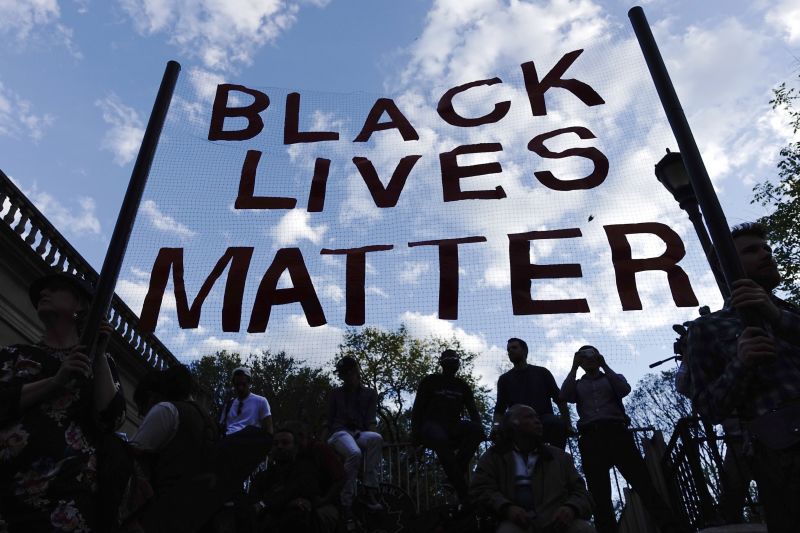“But with our son, since he was so quote ‘large and powerful’ they were worried he might injure the medical staff. So they had to keep sending him back under the anesthesia,” Lazarre says.
Khary was 6 feet tall. But he was slim.
“He wasn't the giant they were describing him as,” Lazarre says.
Baby or 'Militant Black Panther'?
She pauses. Lazarre is white. Her husband is black. She says she started learning the role race would play in her sons’ lives the day her older son, Adam, was born.
“He was a tiny little 6 pound baby. The nurses were white,” she says. “And whenever he cried, they would refer to him as the militant Black Panther.”
Lazarre says there’s no doubt in her mind that what happened with Khary and his knee surgery was because of race.
“I understood, certainly not for the first time, that my son, and my sons both, were viewed as being dangerous, being potentially frightening to people who were white,” she says, adding that it was likely the surgeon didn’t see it that way. “Like most white people, I don't think he was conscious of it at all.”
Lazarre and her husband insisted on seeing Khary.
“And he was indeed obviously agitated, and flailing about, covering his head with his arms,” she says. “And we saw right away that he was scared, not angry or violent.”
He was scared. Lazarre and her husband leaned over and whispered in Khary’s ear: “’It’s going to be okay, you can calm down.’ And he began coming out of the anesthesia more normally.”
Lazarre wrote about this experience in her book “Beyond the Whiteness of Whiteness: Memoir of a White Mother of Black Sons.” It will be republished in a new 20th anniversary edition next year with a new preface from Lazarre. She says there's still so much that hasn't changed.
Disparities Persist
Even as health overall has improved in the U.S., the disparities in treatment and outcomes between white patients, and black and Latino patients, are almost as big as they were 50 years ago. A growing body of research suggests that doctors’ unconscious behaviors play a role in these statistics, and the Institute of Medicine has called for more studies looking at discrimination and prejudice.
One study found that doctors were far less likely to refer black women for advanced cardiac care than white men with identical symptoms. Other studies show that African Americans and Latino patients are often prescribed less pain medication than white patients with the same complaints.
“We know that doctors spend more time with white patients than with patients of color,” says Howard Ross, founder of management consulting firm Cook Ross.
He’s developed a new diversity training curriculum for health care professionals that focuses on the role of unconscious bias in these scenarios.
Doctors and nurses don’t mean to treat people differently, Ross says. But, just like police, they harbor stereotypes that they’re not aware they have. Everybody does.
“This is normal human behavior,” Ross says. “We can no more stop having bias than we can stop breathing."
Unconscious biases often surface when we’re multitasking or when we’re stressed. They come up in tense situations where we don’t have time to think. Like police on the street at night who have to decide quickly if a person is reaching for a wallet, or a gun. It’s similar for doctors in the hospital.
“You’re dealing with people who are frightened, they’re reactive,” Ross says. “If you’re doing triage in the Emergency Room, for example, you don’t have time to sit back and contemplate, ‘why am I thinking about this,’ You have to instantaneously react.”
Doctors are trained to think fast, and to be confident in their decisions.
“There’s almost a trained arrogance,” Ross says.
This leads to treatments prescribed based on snap judgments, which can reveal internalized stereotypes. A doctor sees one black patient who doesn’t take his medication, perhaps because he can’t afford it. Without realizing it, the doctor starts to assume that all black patients aren’t going to follow instructions.
“We’re taught to learn things in a way that involves pattern recognition,” says Rene Salazar, a doctor and professor at UC-San Francisco Medical School. He says he’s fallen prey to his own biases in the exam room.
“These preconceived ideas that because someone is from a certain class or a certain background that they’re going to want pain medication for a particular reason that’s not related to your pain,” he says, is one example.
